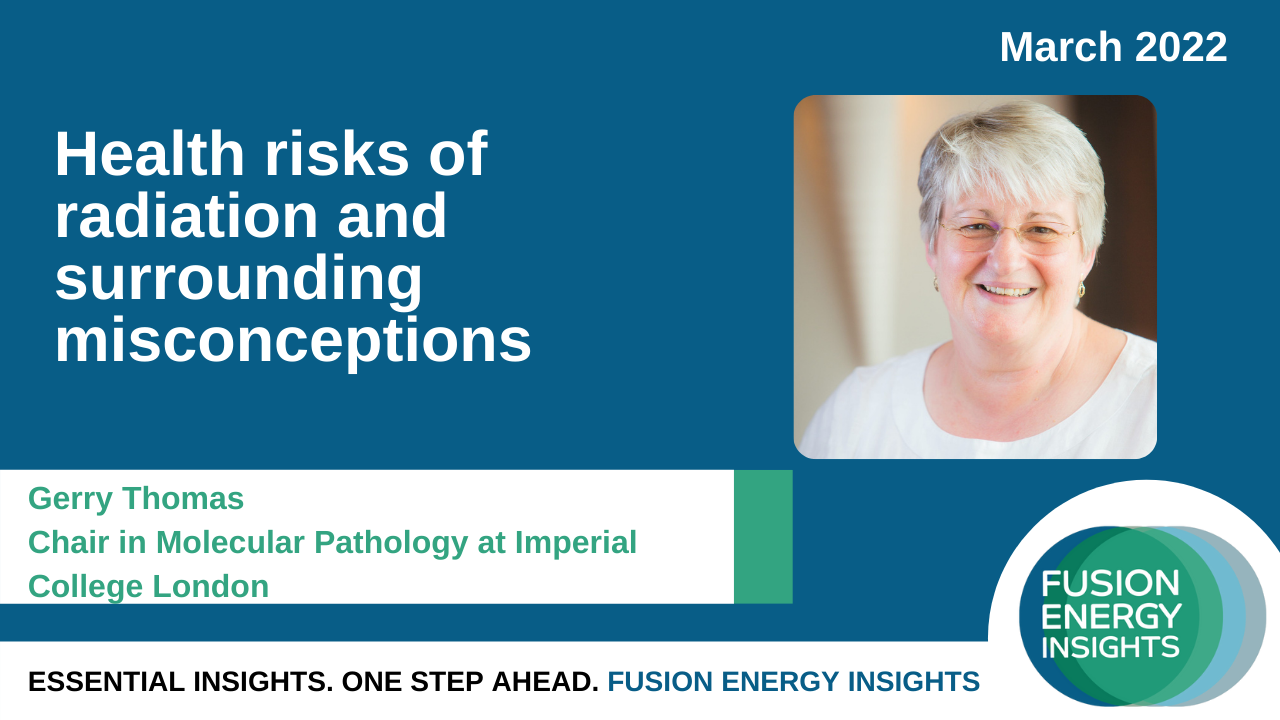The health risks of radiation and surrounding misconceptions
Our March Insights Q&A event was with Prof. Gerry Thomas, Chair in Molecular Pathology at Imperial College London and Director of the Chernobyl Tissue Bank.

Here are three insights from the event:
1. The magnitude of the heath effect from radiation exposure depends on dose,
and at low dose (below 100 mSv) it’s difficult to see any effect on health at all.
The dose depends on many things, including:
Physical half life
Time for half of radioactive isotope to decay
Biological half life
Time for the body to excrete half of the radioactive isotope ingested/inhaled
If the substance decays faster than the body can get rid of it (t1/2(Phys) < t1/2(Bio)), then the body will get a higher dose (an analogy is standing under a power shower with a fast flow).
If the substance has a long half life and decays slower than the body can excrete it (t1/2(Phys) > t1/2(Bio)), then the body will only get a low dose (as if standing under a dripping shower).
There is a perception that long-lived radioactivity gives higher dose, i.e. is more dangerous, but it’s actually the opposite.
2. Some simple measures to limit exposure:
• Keep public away from radioactive sources
• Avoid contamination with particulates (use PPE)
• Provide barriers to stop radiation and immobilize it e.g. vitrification of waste and use of various barriers (including water) for storage
If you aren’t exposed it can’t hurt you.
3. People often worry about tritium but this is unnecessary. Why?
• It has a long physical half life (12 years) relative to its biological half life (10-40 days)
• It is low energy so will not penetrate skin
Gerry says the health effects of tritium are virtually unmeasurable, like being wafted by a feather. For example, drinking 2 litres of water contaminated with tritium at the highest level permissible (10,000 Bq/L) every day for a year would result in a dose of 0.1 mSv, which is equivalent to 2 weeks background radiation.
So, according to Gerry, is radioactive waste from fusion a cause for concern? Not in terms of radiological risk. But in terms of perception by the public, it is a concern. There is a strong need for honesty about waste from fusion and we need regulators who can impose sensible regulations around waste and decommissioning from fusion reactors. Ignoring this issue will make development of a social license for fusion hard to come by.
A full pdf summary of key insights, plus the Q&A event replay, is available to Game Changer members of Fusion Energy Insights. Join us now for full access to all the insights.
